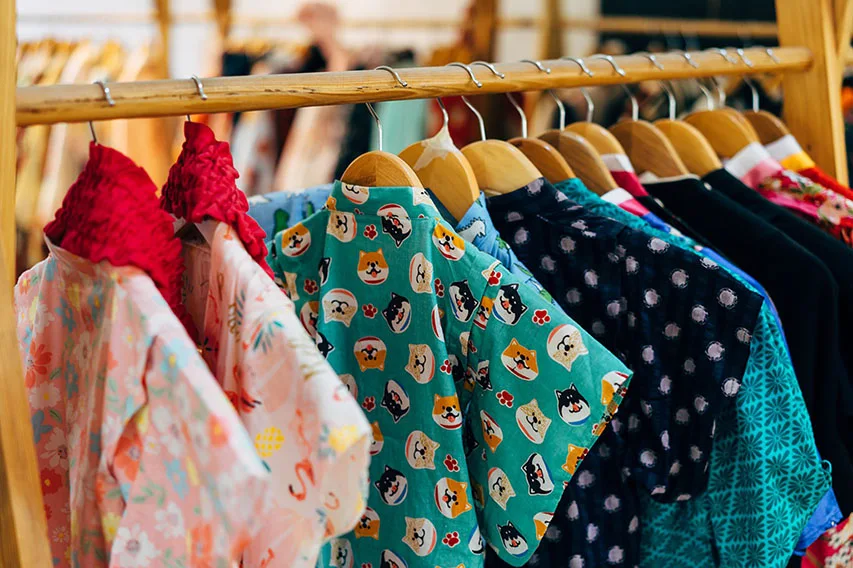If you’re interested in following a more sustainable lifestyle, you’ve likely been looking into how to renovate your closet without contaminating the environment.
The reality is that the clothing industry is an extremely damaging field because of overconsumption and its negative impact on water resources.
Main image by Markus Winkler from Pixabay
Many people have vowed to step away from fast fashion and embrace eco-friendly options, but if you’re a newcomer to this movement, you may not know where to start.
Don’t worry! Here we share with you some eco-friendly tips that won’t compromise your sense of style.
Learn to Read the Labels
The first step to shop in an eco-friendly way is to understand how clothing brands create their pieces. Not all materials impact the ecosystem the same way, especially if we’re dealing with an item crafted overseas where health and safety regulations may not be strict and sustainable.
They also require specific care when washing or drying, so ensure that you understand how to maintain your clothing to make it last longer.
Renewable resources like silk, cotton, or bamboo are organic and sustainable options that you can actively seek in your favourite store.
Some people following a vegan lifestyle may have a tougher time choosing the right clothing items because they also need to consider whether their garment includes animal products.
Reading the manufacturer tags and learning what materials are used to make your clothes is the easiest step to cultivating a more sustainable fashion sense.
Curate Your Wardrobe
One of the fundamental pillars of eco-friendly fashion is to wear what you already own and only expand your closet if you need to update.
You can renovate your wardrobe if you take some time to inspect what’s already there and check those clothes you haven’t used for a while. Create and test outfits meant for different occasions to see what could be missing in your closet.
While you’re inspecting your wardrobe, you may likely find clothing that doesn’t fit your style anymore nor have holes or stains that place them as perfect candidates for the recycling bin.
But with a bit of imagination and sewing, you can revitalize your look with a well-thought repair or upcycle the fabric into other products to reduce your carbon footprint.
You can either use leftover fabric to create an entirely different outfit or use the garment for making yourself brand-new tote bags or bandanas.
Your primary goal here should be avoiding any unnecessary textile material ending up in landfills, furthering contaminating water resources and the environment.
Research and Shop for Sustainable Fashion Brands
Eco-friendly fashion enthusiasts place a lot of effort into learning about the companies behind their favourite pieces of clothing.
Big names and boutiques are starting to listen to their clients and are adapting their manufacturing processes to minimize their impact on the environment.
Choosing to support brands that align with your values is a straightforward way to take a stand with your money.
When you’re shopping for specific items when a wedding or special night comes up, you can look up recommendations on specialized review sites.
The bloggers at https://vegomm.com/best-faux-fur-bolero/ urge shoppers to weigh the pros and cons of each brand by reading reviews online, as that can be the perfect way to compare prices and features without leaving your home.
It would be great if you’re able to choose designers that use eco-friendly and local materials from your area.
Thrift Shops are Your Best Allies
If you’re in dire need of a specific item to complete your perfect look, there are millions of clothing items without an owner waiting to be claimed in thrift shops run by charitable organizations.
You can learn to avoid basic mistakes while visiting thrift shops to ensure that you’ll be happy with your purchase, thanks to millions of fashion enthusiasts who love to spend hours searching for that perfect accessory.
Another great option to find pre-owned clothes is vintage shops, where you’ll be able to find a specific style of clothing if you go with a local boutique.
Although thrift shops and vintage shops can overlap occasionally, we advise you to do a rundown of what you’re looking for and narrow down your research based on your needs and the options available in your area.
The cultural shift towards more sustainable fashion has shaped current trends in the industry, and brands respond positively to activists’ demands to produce eco-friendly clothing.
Every small effort counts towards having a better relationship with Mother Earth, and your wardrobe is the best place to start making a difference.


No comments
Post a Comment
I love to hear from everyone so thanks for taking the time to comment. Please note comments containing links will NOT be published.
Cheers
Jan